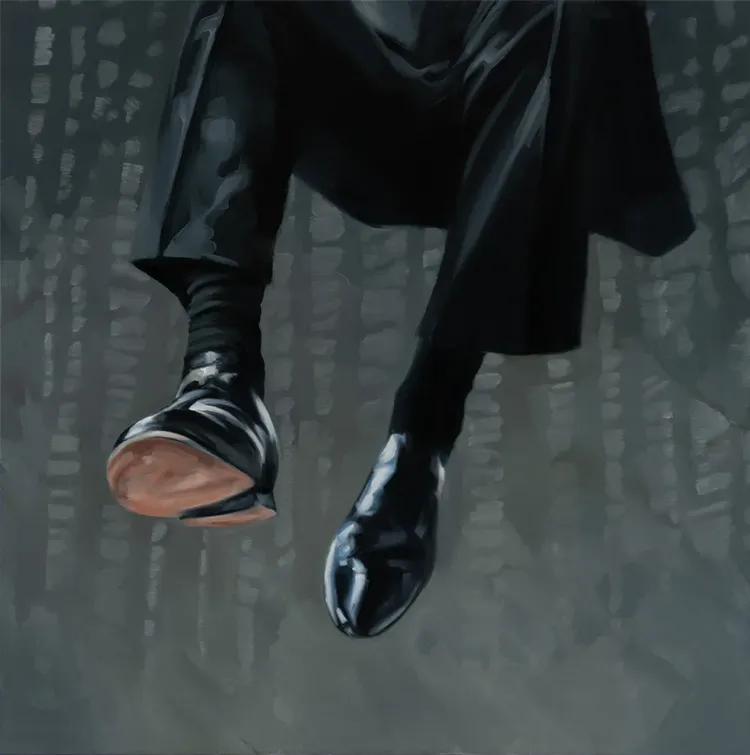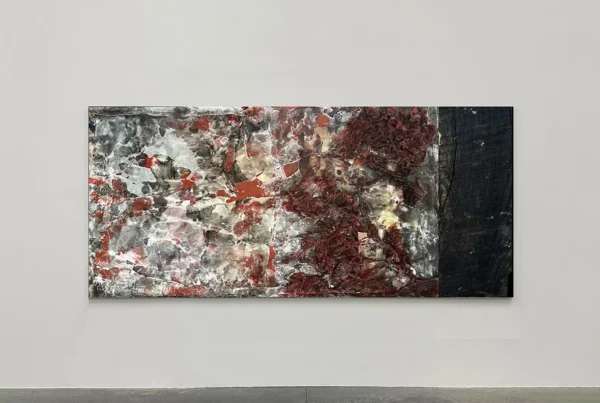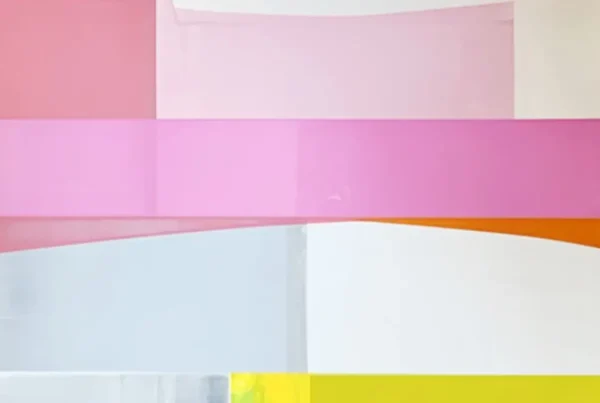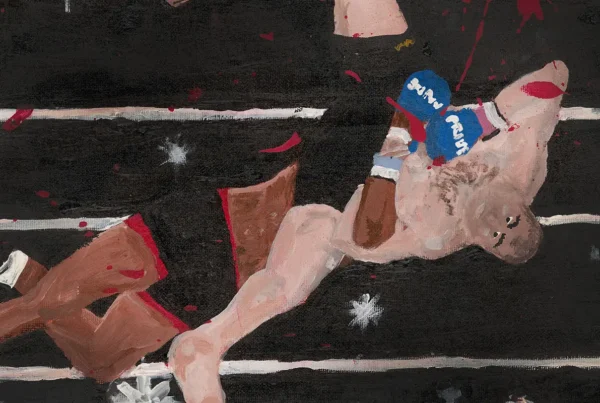From Music to Canvas: A Journey of Transformation
Peter Ravn‘s creative journey has spanned multiple mediums and disciplines, evolving from the realms of graphic design and music videos to his celebrated position in the world of fine art. Born in 1955, Ravn initially made a name for himself as a prominent figure in the Scandinavian music scene, crafting iconic album covers and directing experimental music videos for renowned Danish artists. His early career saw him at the forefront of Danish visual culture in the 1980s and 1990s, where his striking record sleeves and pioneering music videos contributed to the visual identity of many key figures in Scandinavian rock and pop. Ravn’s work during this period displayed a bold, conceptual approach that would later inform his artistic output as a painter.
In the 1990s, Ravn extended his creative reach into fashion through the project DEMOCRATS, where he designed T-shirts emblazoned with politically charged slogans, offering philosophical commentary on contemporary issues. This move highlighted his versatility as a visual artist and his drive to engage with culture on multiple levels. However, it wasn’t until the early 2000s that Ravn’s focus shifted decisively toward painting. This new chapter allowed him to explore the complexities of human psychology and social identity, subjects that have since become central to his work.
Ravn’s paintings have been exhibited in numerous national and international galleries, establishing him as a key figure in contemporary Danish art. His ability to transition from the fast-paced world of graphic design and music to the contemplative space of fine art reflects a broader commitment to understanding and depicting the human condition in all its complexity.
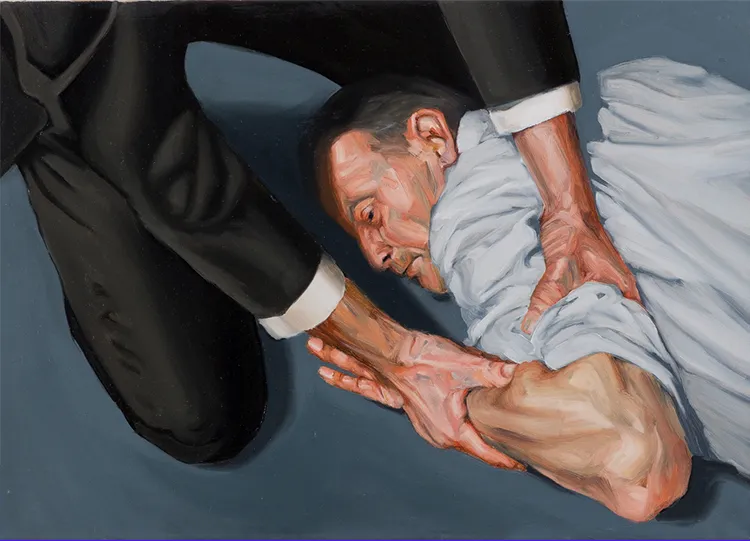
Peter Ravn: Unmasking the Men in Suits
Peter Ravn’s paintings, predominantly figurative oil works, are distinct for their exploration of middle-aged men in suits, depicted in vulnerable and often surreal situations. The uniformity of the suit, typically a symbol of power, professionalism, and control, is recontextualized in Ravn’s work to reveal an unsettling fragility. His subjects are seen in moments of quiet collapse—lying on floors, clinging to tables, or curled up in blankets—behaviors that contrast sharply with the societal image of strength and dominance that men in such attire typically project. One particularly striking image features a man’s body disappearing, while another shows a figure weeping into the hands of someone eerily similar, hinting at themes of existential crisis and identity dissolution.
These images are as unsettling as they are compelling, presenting the modern businessman as a figure caught between societal expectation and personal turmoil. Ravn’s focus on the “anonymous man” in these intimate, sometimes claustrophobic settings raises questions about the psychological and emotional toll of modernity. The suits, once symbols of status and uniformity, become cages that trap their wearers in a state of unease and ambiguity. Ravn’s art taps into the inner conflict many feel in a world that prizes outward success at the expense of emotional expression and vulnerability.
The poignancy of Ravn’s work lies in its ability to humanize the seemingly impenetrable façade of these men, rendering their vulnerability visible to the viewer. His men are neither heroes nor villains, but rather ordinary figures grappling with the weight of expectation, searching for identity in a world that often leaves little room for introspection.
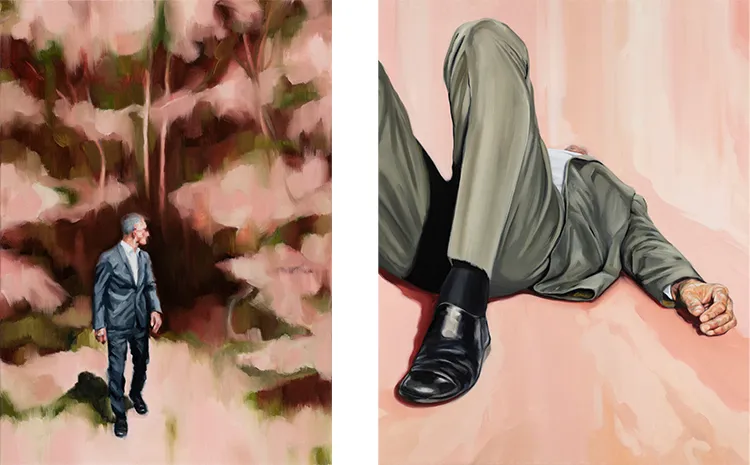
Vulnerability in the Shadows: Ravn’s Surreal Tension
Tension is a dominant theme in Ravn’s work, as his male figures oscillate between the demands of ambition and the desire for something more profound, often unspoken. His paintings confront the quiet desperation that simmers beneath the surface of the modern, capitalist man. The sharp contrast between the outward appearance of control and the inward chaos of these men is rendered in surreal, almost dreamlike visuals. Ravn expertly walks the line between melancholy and dark humor, using irony to emphasize the absurdity of the human condition. His subjects, seemingly lost in their own worlds, exude an emotional weight that speaks to universal themes of alienation, frustration, and a search for meaning.
In many of Ravn’s paintings, his characters seem to be adrift, physically and emotionally, caught in the liminal space between action and inaction. These figures are rarely given specific identities, adding to the sense of anonymity and detachment that permeates Ravn’s work. Their suits act as a kind of armor, yet one that fails to protect them from the forces of anxiety, fear, and confusion. The settings—often stark and minimal—further accentuate the isolation of his subjects, leaving them exposed in a way that is both uncomfortable and arresting for the viewer.
The existential weight of Ravn’s work is underscored by the subtle use of humor. His paintings, while deeply introspective, are not without irony. The absurdity of the men’s poses and situations suggests an awareness of the contradictions inherent in modern life, where personal and professional pressures collide. The humor, however, never undermines the seriousness of the emotions being explored; instead, it adds a layer of complexity to the portrayal of modern man’s internal struggle.
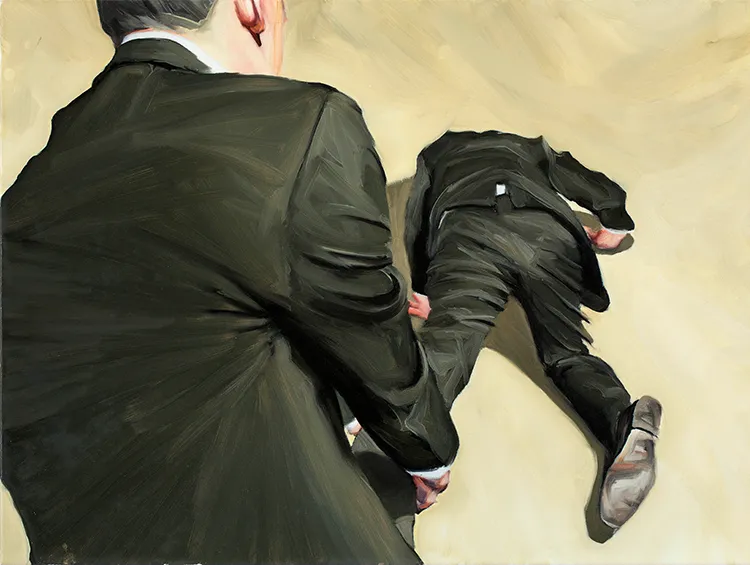
Peter Ravn: The Modern Man Unveiled
Ravn’s gaze is penetrating, capturing moments of unguarded vulnerability in his male subjects. These men, uniformed in their suits and seemingly disconnected from their surroundings, are observed without their awareness, as though the viewer is peering into a private moment. Ravn’s paintings do not simply depict men in suits; they reveal the fragile humanity beneath the surface. His subjects exist in spaces where they have momentarily let go of societal expectations, caught in states of contemplation, anxiety, or exhaustion. The modern man, in Ravn’s view, is someone who is constantly grappling with the pressures of maintaining control while quietly battling inner turmoil.
Ravn’s work uncovers the tension between the public façade and the private self. His male figures, often depicted in a state of introspection or collapse, suggest that the carefully curated image of the modern man is a delusion—an outward expression of order that masks a deeper, more chaotic emotional landscape. These men, while dressed in the symbols of modern success, are shown at their most vulnerable, stripped of the power and authority their attire is supposed to confer. Ravn captures moments when these men’s true selves are briefly revealed, exposing their suppressed emotions, anxieties, and instincts.
Ravn’s exploration of modern masculinity is both timely and timeless. His paintings challenge the viewer to reconsider the archetype of the businessman, revealing that beneath the surface of the suit lies a deeply human figure, wrestling with the same existential questions as anyone else. By peeling back the layers of control and conformity, Ravn uncovers the raw emotion that defines the human experience. Through his art, he offers a poignant commentary on the dissonance between appearance and reality in contemporary society.
